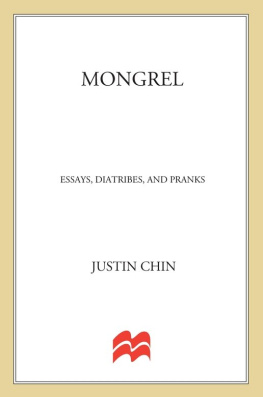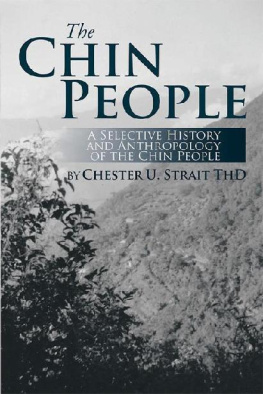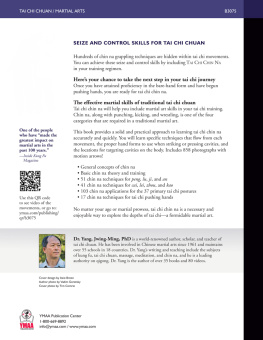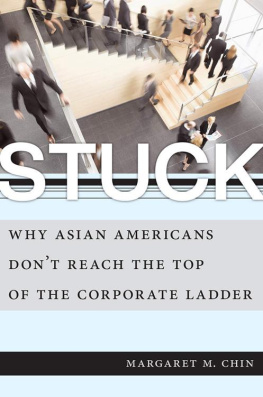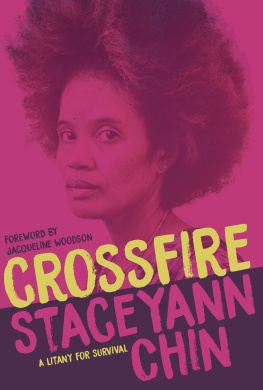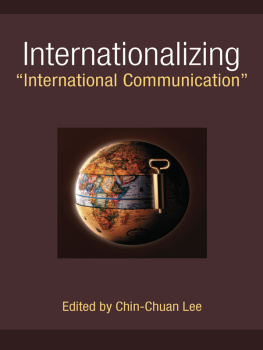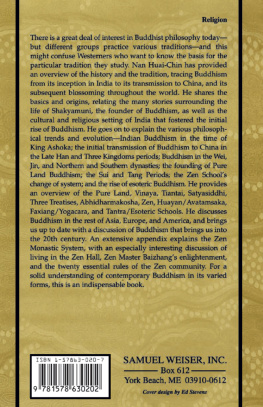Ki-tong Tcheng - Chin-Chin; Or, The Chinaman at Home
Here you can read online Ki-tong Tcheng - Chin-Chin; Or, The Chinaman at Home full text of the book (entire story) in english for free. Download pdf and epub, get meaning, cover and reviews about this ebook. year: 2019, publisher: Good Press, genre: Detective and thriller. Description of the work, (preface) as well as reviews are available. Best literature library LitArk.com created for fans of good reading and offers a wide selection of genres:
Romance novel
Science fiction
Adventure
Detective
Science
History
Home and family
Prose
Art
Politics
Computer
Non-fiction
Religion
Business
Children
Humor
Choose a favorite category and find really read worthwhile books. Enjoy immersion in the world of imagination, feel the emotions of the characters or learn something new for yourself, make an fascinating discovery.

- Book:Chin-Chin; Or, The Chinaman at Home
- Author:
- Publisher:Good Press
- Genre:
- Year:2019
- Rating:5 / 5
- Favourites:Add to favourites
- Your mark:
- 100
- 1
- 2
- 3
- 4
- 5
Chin-Chin; Or, The Chinaman at Home: summary, description and annotation
We offer to read an annotation, description, summary or preface (depends on what the author of the book "Chin-Chin; Or, The Chinaman at Home" wrote himself). If you haven't found the necessary information about the book — write in the comments, we will try to find it.
Chin-Chin; Or, The Chinaman at Home — read online for free the complete book (whole text) full work
Below is the text of the book, divided by pages. System saving the place of the last page read, allows you to conveniently read the book "Chin-Chin; Or, The Chinaman at Home" online for free, without having to search again every time where you left off. Put a bookmark, and you can go to the page where you finished reading at any time.
Font size:
Interval:
Bookmark:

OR
THE CHINAMAN AT HOME
TCHENG-KI-TONG
( Late of the Imperial Chinese Legation )
R. H. SHERARD
27 Southampton Street, Covent
Garden, London. Mdcccxcv
| CHAP. | PAGE |
| I. | THE CHINESE HOME |
| II. | RELIGIOUS AND NATIONAL FTES |
| III. | THE FTE OF THE MOON |
| IV. | THE FEAST OF LANTERNS |
| V. | THE FEAST OF THE TWO STARS |
| VI. | THE FEAST OF FLOWERS |
| VII. | NEW YEARS DAY |
| VIII. | THE END OF THE YEAR |
| IX. | PROCESSIONS |
| X. | A BUDDHIST SOLEMNITY |
| XI. | RUSTIC PLEASURESWALKS AND PILGRIMAGES |
| XII. | BATHING |
| XIII. | KITE-FLYING |
| XIV. | THE ILLUMINATED BOATS |
| XV. | GARDENING |
| XVI. | THE CHASE |
| XVII. | FISHING |
| XVIII. | CHARMING WOMANCOQUETRY |
| XIX. | FANS |
| XX. | CELEBRATED BEAUTIES |
| XXI. | SYSTEM OF EDUCATIONTHE STUDENT |
| XXII. | POETICAL COMPETITIONS |
| XXIII. | PAINTERS |
| XXIV. | CHESS |
| XXV. | AT TABLETHE PLEASURE OF DRINKING |
| XXVI. | TEA-DRINKING |
| XXVII. | CHOPSTICKS |
| XXVIII. | CHINESE COOKING |
| XXIX. | GAMES OF SKILL: CONJURING |
| XXX. | THE EVOCATION OF SPIRITS |
| XXXI. | PHRENOLOGY AND CHIROMANCY |
| XXXII. | DIFFERENT GAMESORIENTAL SHOOTING MATCHESTHE CANDLESTICKSHUTTLECOCKSTHE COIN GAME |
| XXXIII. | GAMES OF CHANCECARD GAMESFIRST GAME: AWAITING THE CARDSECOND GAME: FISHINGTHIRD GAME: THE PECKING GAME |
| XXXIV. | LOTTERIES |
| XXXV. | PUBLIC PLEASURESTHE THEATRES |
| XXXVI. | ANIMAL FIGHTSI. CRICKET FIGHTSII. QUAIL FIGHTS |
| XXXVII. | CONCLUSIONTHE PLEASURES OF A PHILOSOPHER |
OR,
THE CHINAMAN AT HOME
THE CHINESE HOME
Font size:
Interval:
Bookmark:
Similar books «Chin-Chin; Or, The Chinaman at Home»
Look at similar books to Chin-Chin; Or, The Chinaman at Home. We have selected literature similar in name and meaning in the hope of providing readers with more options to find new, interesting, not yet read works.
Discussion, reviews of the book Chin-Chin; Or, The Chinaman at Home and just readers' own opinions. Leave your comments, write what you think about the work, its meaning or the main characters. Specify what exactly you liked and what you didn't like, and why you think so.

